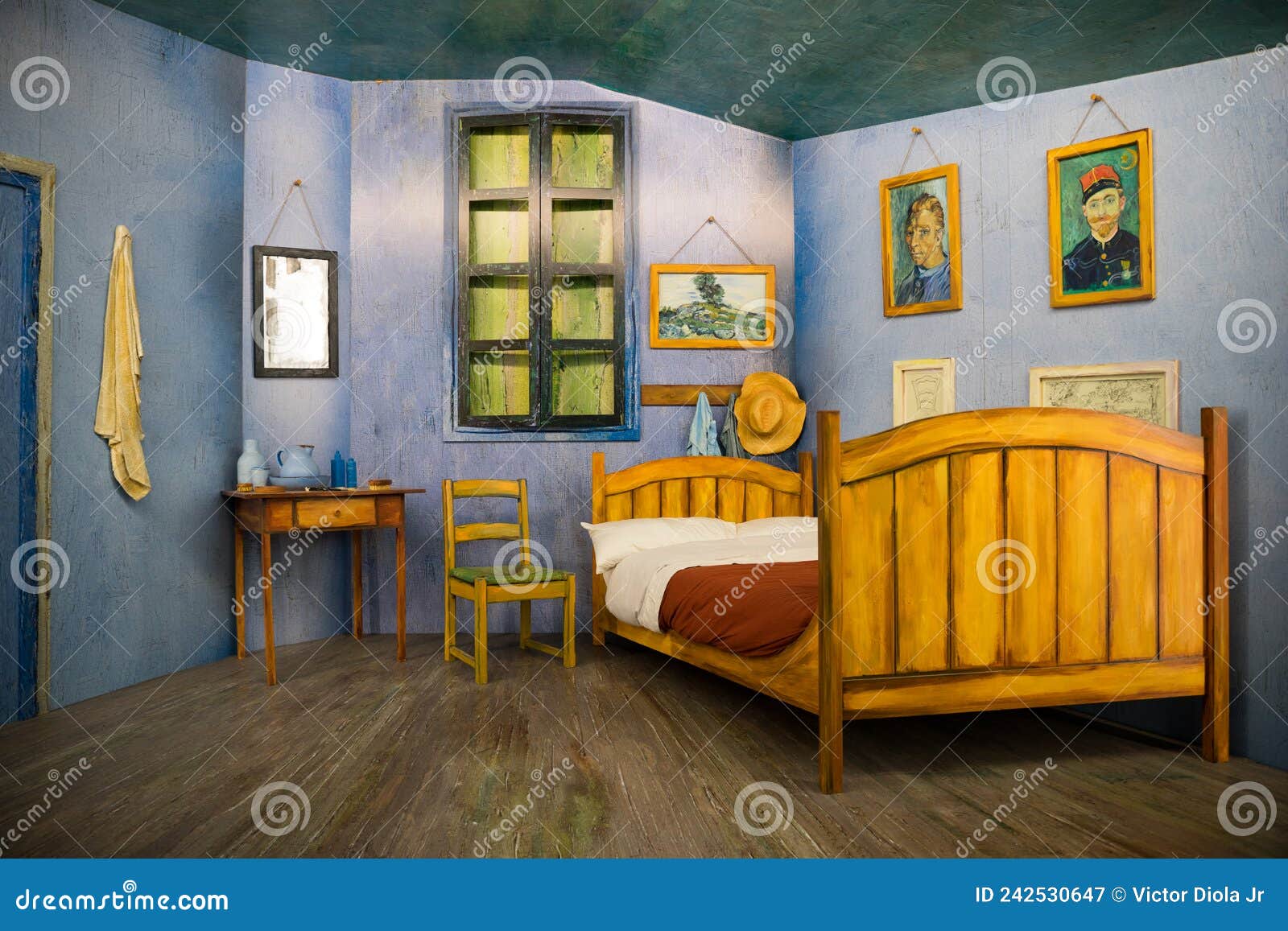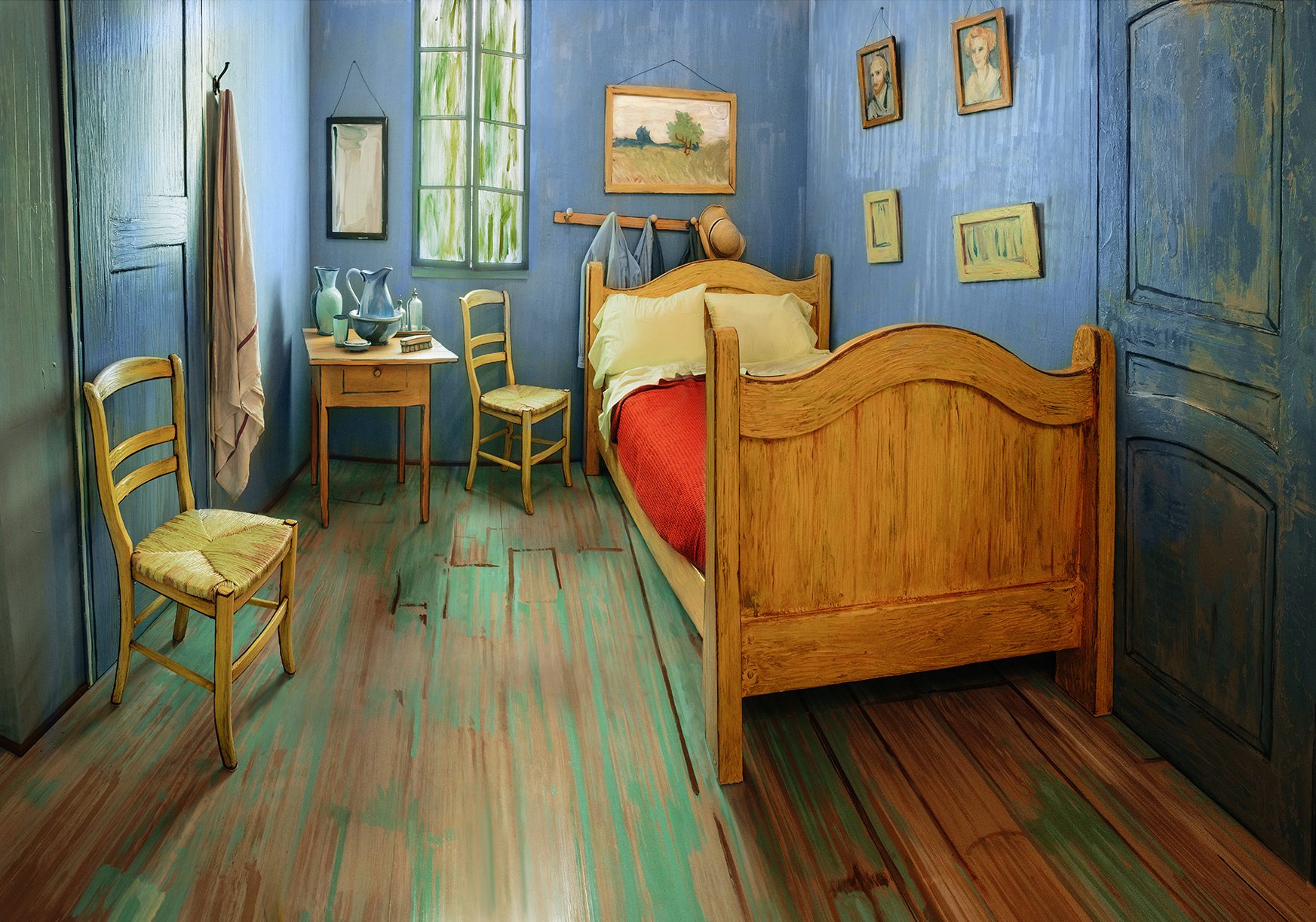The Bedroom at Arles: A Masterpiece of Color and Expression

Vincent van Gogh’s “The Bedroom at Arles” is a captivating painting that transcends its depiction of a simple bedroom, offering a glimpse into the artist’s inner world and artistic vision. The vibrant colors, dynamic composition, and symbolic elements create a powerful and emotive experience for the viewer.
The Painting’s Vibrant Colors
The painting’s color palette is striking and unconventional, showcasing Van Gogh’s mastery of color theory and his desire to express emotions through color. The walls are painted in a deep, saturated yellow, creating a sense of warmth and energy. The bedspread is a rich, deep blue, contrasting with the yellow walls and suggesting a sense of peace and tranquility. The furniture, including the chairs and the bed, is painted in a variety of hues, adding depth and complexity to the composition.
Perspective and Composition
Van Gogh’s use of perspective and composition creates a sense of depth and intimacy within the painting. The room is depicted from a slightly elevated viewpoint, allowing the viewer to see the entire space. The lines of the furniture and the floorboards converge at a vanishing point in the distance, creating a sense of perspective. The placement of the bed in the center of the canvas emphasizes its importance and creates a sense of balance and harmony.
The Sunflower Motif
The sunflower motif is a recurring theme in Van Gogh’s work and holds significant meaning in “The Bedroom at Arles.” Sunflowers were a symbol of life, vitality, and hope for Van Gogh, representing his deep connection to nature and his search for meaning in the world. The sunflower motif in this painting is particularly poignant as it is a reminder of the beauty and fragility of life, a theme that was central to Van Gogh’s artistic vision.
Van Gogh’s Bedroom

The painting “The Bedroom at Arles” is more than just a depiction of a room; it’s a window into the soul of Vincent van Gogh, revealing his intimate life, artistic process, and the struggles he faced. This work, painted in 1888, transcends the boundaries of a simple still life and becomes a powerful reflection of the artist’s inner world.
The Bedroom as a Personal Space
The bedroom was a place of solace and inspiration for Van Gogh. He spent countless hours in this modest room, creating some of his most iconic works. It was here that he sought refuge from the outside world, a space where he could delve into his thoughts and emotions. He saw the bedroom not just as a place to sleep but as a haven for his creative spirit.
Symbolic Elements
The painting is rich in symbolism, with each element carrying a deeper meaning.
- The Bed: The bed, with its simple white sheets and pillows, represents rest and tranquility. It symbolizes Van Gogh’s longing for peace and stability, a stark contrast to the turbulent emotions he often experienced.
- The Chair: The chair, positioned prominently in the foreground, signifies the artist’s presence and his active engagement with his surroundings. It also serves as a reminder of the physical and emotional exhaustion he endured.
- The Window: The window, with its view of the outside world, represents Van Gogh’s connection to nature and his desire to find beauty and inspiration in the everyday. It also hints at his longing for connection and companionship.
The Painting’s Connection to Mental Illness
Van Gogh’s struggles with mental illness are evident in the painting’s bold colors and expressive brushstrokes. The vibrant yellow walls and the swirling patterns on the bedspread create a sense of unease and instability, mirroring the turmoil he experienced. The painting’s intensity can be interpreted as a reflection of his emotional state, his anxieties, and his attempts to cope with his condition.
The Pursuit of Peace and Tranquility, Van gogh bedroom painting
Despite the inherent anxieties reflected in the painting, “The Bedroom at Arles” also conveys a yearning for peace and tranquility. The simplicity of the room, the calming colors, and the overall sense of order suggest Van Gogh’s desire for a sanctuary, a place where he could find solace and respite from his inner struggles.
The Legacy of Van Gogh’s Bedroom: Van Gogh Bedroom Painting

The Bedroom at Arles, a seemingly simple depiction of a modest room, transcends its subject matter to become a powerful testament to the transformative power of art. It has had a profound impact on the development of modern art, inspiring generations of artists and influencing the way we perceive and appreciate color, emotion, and the human condition.
The Painting’s Influence on Modern Art
Van Gogh’s Bedroom played a pivotal role in shaping the trajectory of modern art. The painting’s bold use of color, its expressive brushstrokes, and its emphasis on the artist’s personal experience broke away from traditional academic painting. It helped pave the way for the development of movements like Expressionism and Fauvism, which embraced subjective expression and the exploration of emotions through color.
Artists Inspired by Van Gogh’s Bedroom
Numerous artists have drawn inspiration from Van Gogh’s Bedroom, interpreting its themes in their own unique ways. For example, the American artist, Mark Rothko, whose works are known for their abstract fields of color, is believed to have been influenced by Van Gogh’s use of color and its emotional impact. Rothko’s paintings, like “No. 14 (1960),” echo the intensity and depth of color found in Van Gogh’s Bedroom, albeit in a more abstract form.
Contemporary Art Inspired by Van Gogh’s Bedroom
The enduring legacy of Van Gogh’s Bedroom is evident in contemporary art. Contemporary artists continue to reinterpret the painting’s themes of color, emotion, and the human condition. For instance, the British artist, David Hockney, known for his vibrant and often playful use of color, has acknowledged the influence of Van Gogh’s Bedroom. His work, like “A Bigger Splash” (1967), demonstrates a similar appreciation for the power of color to evoke emotion and capture a sense of place.
